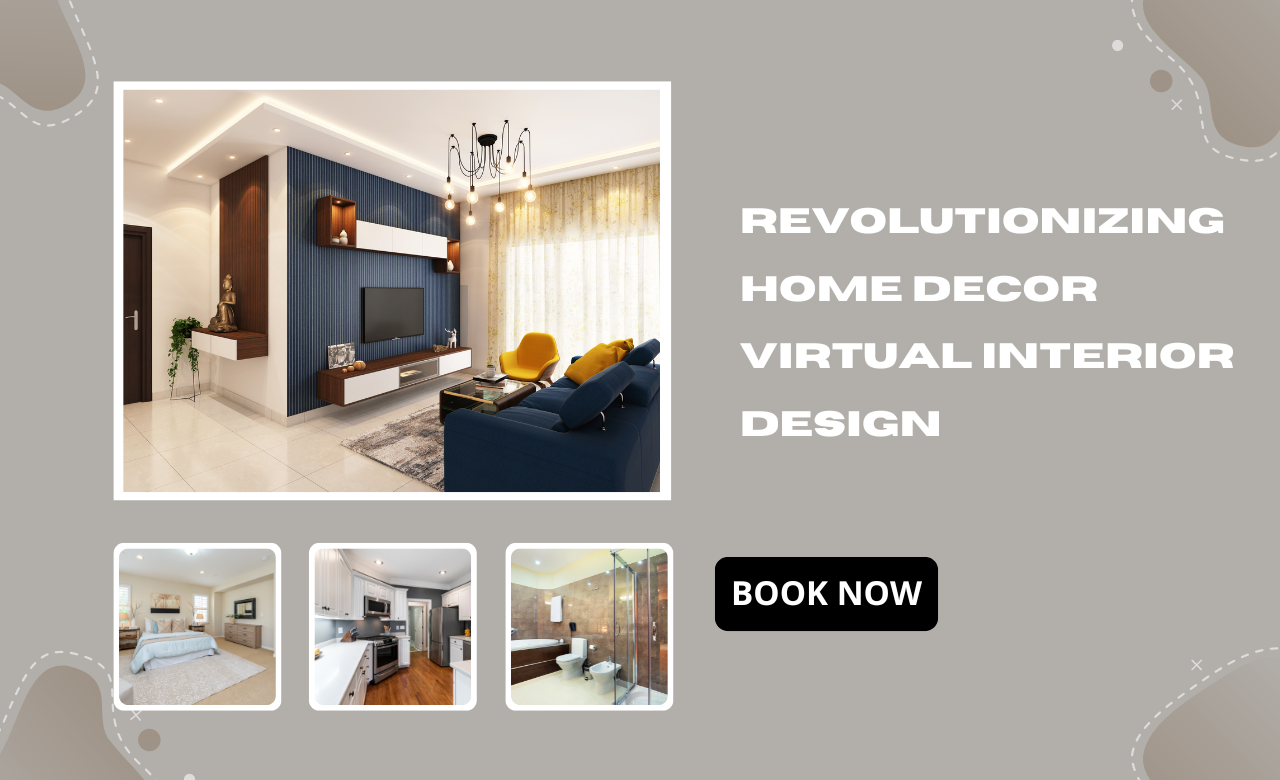Revolutionizing Home Decor Virtual Interior Design
The interior design landscape has undergone a transformative shift in recent years, propelled by advances in technology and changing consumer preferences. Virtual interior design is at the forefront of this revolution, offering a convenient, accessible, and cost-effective alternative to traditional interior design services. This innovative approach allows homeowners to collaborate with professional designers remotely, leveraging digital tools to create beautiful, functional living spaces. In this comprehensive guide, we’ll explore the world of virtual interior design, its benefits, how it works, and tips for choosing the right virtual design service for your needs.
What is Virtual Interior Design?
Virtual interior design, also known as e-design, is a service where professional interior designers offer their expertise and guidance remotely. Using digital platforms and tools, designers work with clients to conceptualize, plan, and execute design projects without the need for in-person consultations. This approach leverages technology to bridge the gap between designers and clients, providing a seamless and efficient design experience.
Benefits of Virtual Interior Design
The popularity of virtual interior design has soared due to its numerous advantages over traditional design methods. Here are some key benefits:
1. Convenience
One of the most significant advantages of virtual interior design is convenience. Clients can collaborate with designers from the comfort of their own homes, eliminating the need for multiple in-person meetings. This flexibility is particularly beneficial for busy homeowners, remote workers, and those living in different geographical locations from their chosen designer.
2. Cost-Effectiveness
Virtual interior design services are typically more affordable than traditional design services. By eliminating travel expenses and reducing overhead costs, designers can offer their services at lower rates. Additionally, clients can choose from various service packages that fit their budget, from comprehensive room designs to simple consultations.
3. Access to a Global Network of Designers
With virtual interior design, clients are no longer limited to local designers. They can access a global network of talented professionals, allowing them to find the perfect match for their style, preferences, and project requirements. This access to a diverse pool of designers ensures a broader range of ideas and design solutions.
4. Faster Turnaround Times
The streamlined nature of virtual interior design often results in faster project completion times. Digital tools enable efficient communication, quick revisions, and seamless collaboration, allowing clients to see their design concepts come to life more quickly than traditional methods.
5. Personalized and Interactive Experience
Virtual interior design platforms often include interactive features such as 3D renderings, virtual reality walkthroughs, and digital mood boards. These tools enhance the client’s ability to visualize the final design, providing a more immersive and personalized experience.
How Virtual Interior Design Works
The process of virtual interior design varies slightly depending on the service provider, but generally follows these steps:
1. Initial Consultation
The process begins with an initial consultation where the client and designer discuss the project scope, goals, budget, and design preferences. This can be conducted via video call, phone, or through an online questionnaire.
2. Sharing Information and Measurements
Clients provide detailed information about their space, including measurements, photos, and any existing furniture or décor they wish to incorporate. Some services may offer virtual measurement tools to assist clients in accurately capturing their space dimensions.
3. Design Concept and Mood Board
Based on the initial consultation and provided information, the designer creates a design concept and mood board. This includes color schemes, furniture selections, and décor ideas, which are shared with the client for feedback and revisions.
4. Detailed Design Plan
Once the design concept is finalized, the designer develops a detailed design plan. This includes floor plans, 3D renderings, shopping lists, and implementation instructions. The plan provides a comprehensive guide for clients to execute the design themselves or with the help of local contractors.
5. Implementation Support
Many virtual interior design services offer ongoing support during the implementation phase. This may include answering questions, providing additional resources, and ensuring the design is executed as planned.
Choosing the Right Virtual Interior Design Service
With numerous virtual interior design services available, selecting the right one for your project can be daunting. Here are some tips to help you make an informed decision:
1. Research and Reviews
Start by researching different virtual interior design services and reading reviews from past clients. Look for feedback on the quality of designs, customer service, and overall satisfaction. Reputable platforms often showcase client testimonials and project portfolios.
2. Designer Profiles and Portfolios
Many virtual design services allow you to browse designer profiles and portfolios. Take the time to review their previous work to ensure their style aligns with your preferences. Look for designers with experience in projects similar to yours.
3. Service Packages and Pricing
Compare the service packages and pricing of different virtual interior design platforms. Ensure the packages offered meet your needs and budget. Some services provide a la carte options, allowing you to choose specific elements of the design process, while others offer comprehensive packages.
4. Communication and Collaboration Tools
Effective communication is crucial for a successful virtual design project. Look for services that offer user-friendly collaboration tools, such as video calls, messaging, and project management platforms. These tools facilitate clear communication and ensure you stay informed throughout the design process.
5. Flexibility and Customization
Choose a service that offers flexibility and customization. Your home is unique, and the design service should accommodate your specific needs and preferences. Ensure the platform allows for revisions and adjustments to the design plan.
Conclusion
Grayscale Homes Virtual interior design is revolutionizing the way we approach home décor, offering a convenient, cost-effective, and personalized alternative to traditional design services. With its numerous benefits, including enhanced visibility, access to a global network of designers, and faster turnaround times, it’s no wonder that more homeowners are turning to virtual design solutions.
By understanding how virtual interior design works and following the tips for choosing the right service, you can transform your living space with the help of a professional designer, all from the comfort of your own home. Embrace the future of interior design and experience the ease and innovation of virtual design services for your next home project.





